
21 minute read
DISCOVERING PITCHING
How to get it right from those tricky spots around the green
By Conor Thornton
A ‘pitch’ is a shot typically played when the ball is further from the green than where you would chip from. Ball flights can be low, mid or high. The shot can be visualised similar to what was discovered with a chip, where throwing the ball under arm, this time with more energy, can give you a good representation of the ball flight but with more power due to the increased distance required.
The following steps will help you get set up to play this shot, along with a simple exercise to nail it to perfection.
The set-up
• Place the left hand (if right-handed) towards the top of the grip and the right hand below. Left-handed golfers would normally have the right hand on top of the club and the left below. You can hold lower on the grip


• Stand with feet together and create a ‘Y’ shape with the arms and the club as shown
• Hold the club at waist height, horizontal to the ground.
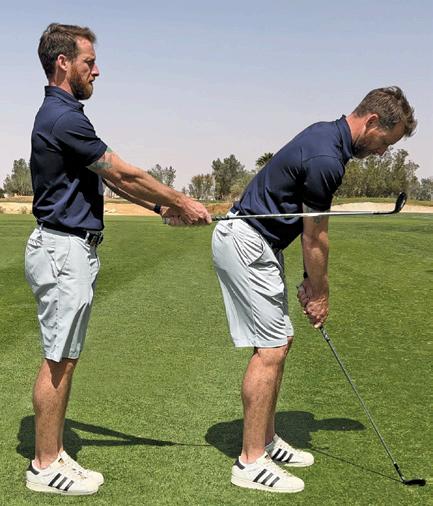
• Bow to the ball, which will be achieved by bending from the waist.
• Create a little flex in your knees, this will allow you to move the body when swinging the club
• Take a small step with each foot so the ball is centred.
The swing
Get a feel for moving the club, this will be bigger than it is when chipping, just as it would be if you were to underarm throw the ball, a longer distance will require your swing to also get bigger
• Explore getting the arms and the club to move past your waist on the backswing
• A visual of creating an ‘L’ shape with the arms and the club shaft can be quite useful
• You’ll notice that you’ll start using your wrists for this to work
• Swing the club back toward the ground making sure to make contact with the ground with the club brushing the mat or grass where the ball would be
• Keep the club moving forward Finish the movement when the hands reach waist high on the target side
The exercise
The low point is the bottom of the swing where the club changes from a downward direction to an upward direction. This is where we want the club to make contact to the ball. A great way to help with this is to use the ‘bounce angle’.
The bounce angle is the angle between the front and back of the club ‘sole’. We want to use this correctly in order to create more forgiveness as we discover pitching. If the sharper ‘leading edge’ of the club was to make contact with the ground before the ball, it would dig into the ground causing ‘heavy’ contact resulting in large loss of distance. A little like using the knife blade to spread butter across bread, the knife would dig in and tear the bread.
If you can create a low point with the club shaft more vertical, instead of leaning towards the target we can ‘activate’ the bounce as this then becomes the part of the sole that interacts with the ground when you hit the ball. Going back to the bread and butter analogy, the butter is spread across the bread with the flat wide part of the knife thus eliminating digging. This all ensures a larger area for the low point and you gaining confidence in making vital contact to the ground at or even before the ball.
Place a golf tee in the ground where the ball would lie. Now swing the club to a length which would be longer than a chip shot. From here you will try and strike the tee in the ground and then finish the swing to a similar length to the backswing.
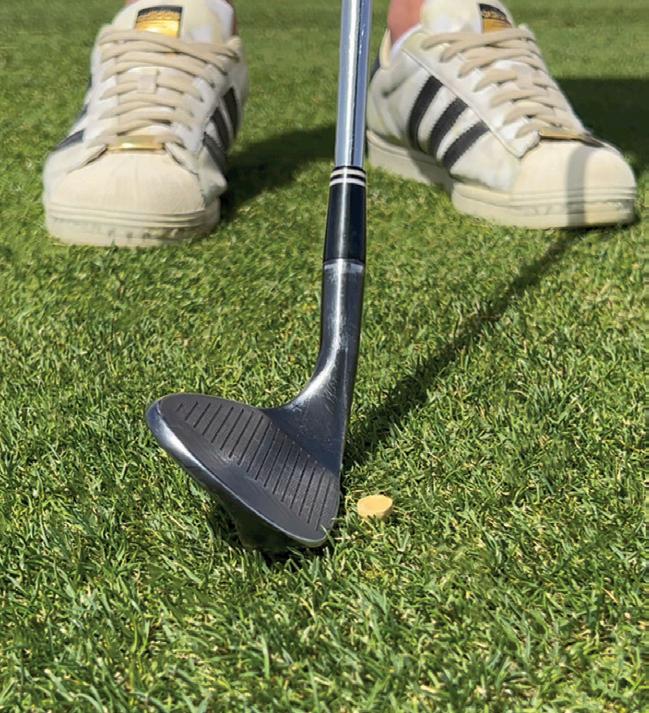
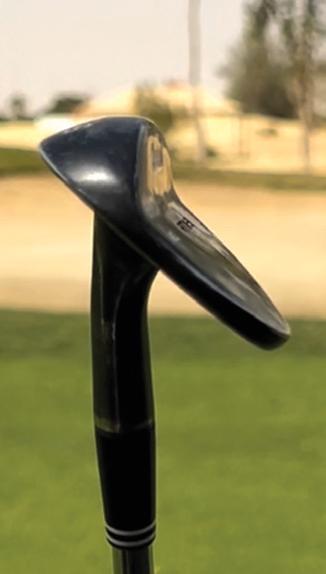
To control distance, we can shorten the swing for shorter carry distances and lengthen the swing for longer carry distances. We can also adjust the distance and the flight of the ball by simply using di erent clubs.
Experiment with the clubs such as the 9-iron or sand wedge and explore how the higher lofts need bigger swings and lower shots require smaller swings, you will get good at finding out which provide easier and better contact, get good at those as a base line and then start explore the other options.
conor thornton is a member of the PGA Professionals team at Golf Saudi-managed Riyadh Golf Club

THINK OF YOUR METALWOODS AS SMALLER, MORE VERSATILE DRIVERS
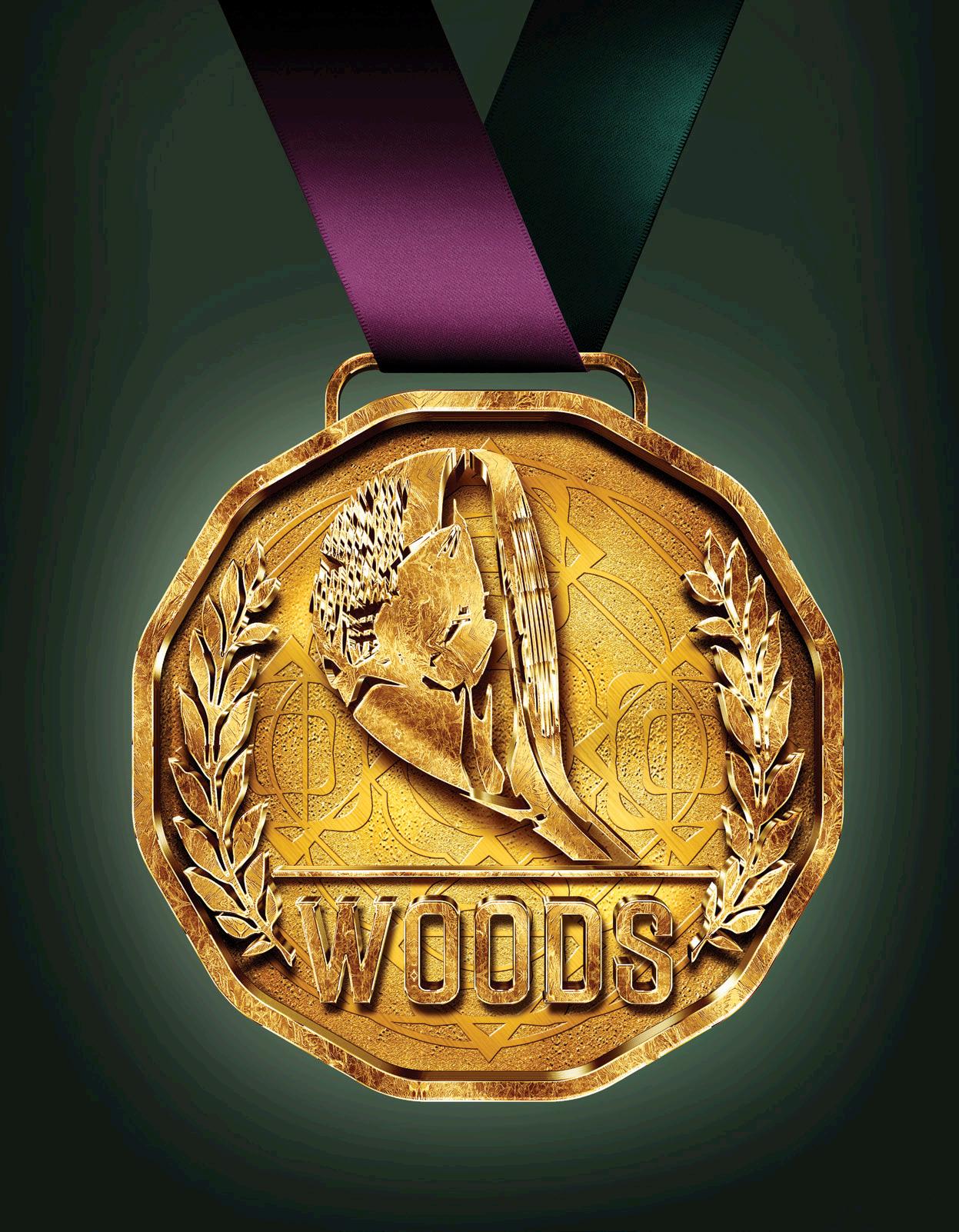
CALLAWAY
PARADYM/PARADYM X/PARADYM ♦♦♦
RRP AED 1,895
WHAT IT DOES: When you hear that the carbon composite used in the sole of these new fairway woods is 50 per cent lighter than steel, you might think, Cool, but isn’t it better to keep heavy weight low in a fairway wood so that shots launch higher? It is, but you want to concentrate that weight where it will be most effective. In this case, a tungsten cartridge is placed in the front of the sole to position the centre of gravity in line with the centre of the face. These woods have adjustability across 14 models and three head shapes. If you can’t find the right fit, perhaps it’s time to look at the new bowling balls.


WHY WE LIKE IT: Whether it’s the shallow-faced, easy-launching Paradym, the oversize, draw-biased X or the low-spinning, compact ♦♦♦ for elite players, the story starts with the face technology. An internal structure around the perimeter concentrates more flexing in the hitting area. Artificial-intelligence computer modelling was used to weave complex thicknesses across the face to optimise performance for each of the three models and every individual loft. Callaway made it a priority this year to improve low-face impacts for improved consistency regardless of where you make contact.
Demo this club and get a custom fit at eGolf Megastore
WHAT IT DOES: One challenge with fairway woods is that they are the biggest clubs you hit off the ground. That means a lot of impacts occur lower on the face. A great way to make the face flex better is to extend it into the crown and sole. This is what Cobra has done here — a flap of the face wraps around the bottom. The so-called ‘L-face’ serves as a hinge to get more energy into the ball at impact. A heavy weight low in the front part of the sole improves launch conditions, and, thanks to an internal bridge-like structure, the weight rests above the sole, allowing the L-face to flex more effectively.
WHY WE LIKE IT: Cobra fairway woods made their name with sole rails that helped the head glide through the turf, but rails on these new fairway woods would have stiffened the sole, preventing the L-face from flexing properly. Instead, Cobra uses subtle shaping on the leading edges. Raising the bounce angle on the leading edge mimics the effect of the rails, smoothing fat shots so that more energy transfers into the ball. We also love the three fully adjustable choices: the ultra-low spin LS (for better players), the forgiving, neutral flight standard model and the extra slice-fighting options on the Max.
Demo this club and get a custom fit at eGolf Megastore
WHAT IT DOES: The equipment rules state that if you cut a complete opening in the sole of a clubhead, it has to be filled with something. In most cases that slot is filled with a polymer that gives enough at impact to help the face flex more. For Mizuno, though, that wasn’t the best use of that space. The polymer — thermoplastic urethane in this case — is a start toward more distance, but a stainless-steel weight bar is also placed in the middle of that polymer. The weight helps lower the centre of gravity for less spin and a higher launch.

WHY WE LIKE IT: These fairway woods likely fit a better player’s eye, but they neatly hide the elements that allow them to play with the additional forgiveness average golfers need. Those include a lightweight carbon-composite crown that frees up mass for a rear weight screw and internal weight pad. Together, they increase stability on off-centre hits and produce a higher launch. Furthermore, the adjustable heads make it easier for the average golfer to play a higher-lofted 3-wood in case you need an even higher launch. A multiple-thickness face pattern is thinner than a quarter for maximum flexing and to help turn those mediocre hits into something like good ones.
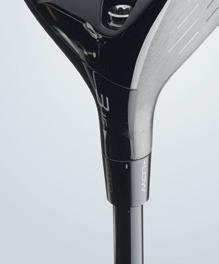
WHAT IT DOES: The honey-do list for fairway woods could ruin any Saturday morning. The G430 tackles this challenge in several ways. Need help launching it higher? How about a wraparound carboncomposite crown to lower the centre of gravity (CG). Need a faster face? How about stretching it into the crown and sole for more spring on off-centre strikes. Need more launch on thin hits low on the face? How about less curve on the bottom half of the face for more consistency. The G430 responds: “Check, check and check.”
WHY WE LIKE IT: Ping’s primary mission since forever has been increasing forgiveness. That’s how you win a loyal fan base of average golfers. Forgiveness is generally improved by increasing a club’s moment of inertia (resistance to twisting). It often comes from repositioning weight to the perimeter to stabilise the head. But these fairway woods, including the high-launching, slice-fighting SFT model, maintain a steady MOI in favor of a lower CG. A low CG that lines up with the fastest part of the face yields more overall consistency in distance and dispersion. Come to think of it, that sounds a heck of a lot like forgiveness. Old dog, meet new tricks.
SRIXON
ZX MK II
RRP AED 1,395
WHAT IT DOES: It’s relatively easy to make the face of a driver flexible because its trampoline face is much larger than that of a fairway wood. That’s why Srixon’s work here is crucial to making these faces hotter. By alternating flexible and stiff zones around the perimeter of the face, crown and sole, the body contributes to the way the face can more uniformly give at impact for increased ball speed across a larger area. Extra power comes from a carbon-composite crown on the 3-wood and a more gentle step-down feature on the crown of the other lofts that lowers the height of the crown (and thus drops the centre of gravity, too) to improve launch and reduce spin
WHY WE LIKE IT: The spring-like effect created by the frame isn’t anything you can see. It involves microscopic changes in the thicknesses and curvatures of the crown and leading-edge joints. Just as invisible and no less important to distance is the internal weighting. Mass within the head pushes weight forward, but it’s shaped with an overhang, allowing the front of the sole to stay thin and help the face flex more. One other small change you won’t see: These heads are fractionally larger than in the past to make them extra forgiving.
TAYLORMADE
STEALTH
WHAT IT DOES: This is TaylorMade’s fourth generation of compact titanium fairway woods, and each time these clubs find another gear. Whether it’s a stronger, faster titanium alloy in the face or a huge weight pad that lowers the centre of gravity, TaylorMade makes the case that titanium can do for a fairway wood what it has been doing for drivers. TaylorMade’s designers took that weight pad and made it adjustable in a way that would make Tony Stark jealous. The steel weight slides backward and forward (basically into a garage), letting players tweak launch and spin preferences. This is all accomplished without negatively affecting turf interaction
WHY WE LIKE IT: If there was a problem with the first versions of TaylorMade’s titanium fairway woods, it was that they tended to be designed for better players because of their compact size and low-forward (and less forgiving) centre-of-gravity position. The new movable weight pad is an effective way to dial in spin preferences, but it also makes this fairway wood 20 per cent more forgiving when the weight slides all the way to the back — all without having to make the head larger and harder to hit off the ground.
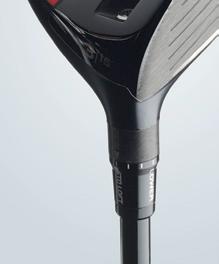
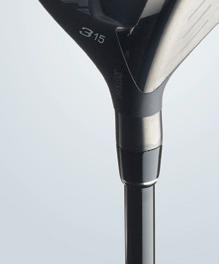
RRP AED 1,695
WHAT IT DOES: Saving weight wherever you can in a fairway wood is crucial to achieving performance goals. This line uses a lightweight carbon-composite section that wraps around the edges of the crown to save more than 20 grams compared to the steel it replaces. The shallow face height is integral to helping golfers launch the ball, but the idea isn’t as simple as it seems. Less face height means a smaller trampoline for maximum ball speed, so TaylorMade engineers redesigned these faces to feature multiple thicknesses to maximise ball speed for on-centre and off-centre hits.

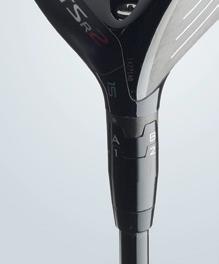
WHY WE LIKE IT: The Stealth 2 is a plenty spicy fairway wood that works for a lot of golfers, but the surprise here is the Stealth 2 HD, which does its best to turn the most mediocre fairway-wood players into modern-day Gene Sarazens. This is accomplished with a shallower face than the standard model, yet the Stealth 2 HD still possesses an overall face area and size that exudes forgiveness thanks to a centre of gravity that is low and deep. Also, rather than use the typical face insert, this model has a cast face with even more varied thickness zones to ensure ball speed on strikes that aren’t so pure.
RRP AED 1,595
WHAT IT DOES: Sometimes to get better, you have to shake up the old way of doing things. Titleist’s engineers decided that the channel cut in the front part of the sole — a staple for more than eight years worth of fairway woods — was no longer necessary. Yes, the channel allowed the face to flex a little better, but it also took up valuable mass. Repositioning that mass in these new fairway woods produced the lowest centre of gravity in a Titleist steel fairway wood ever. As the engineers like to say: “When you lower your CG, you improve ball speed a little bit, you improve launch angle a little bit, you improve spin a little bit, and you actually improve the feel of a centre hit, too.”
WHY WE LIKE IT: The perception that Titleist fairway woods are for only tour players has never been more wrong than it is today. Yes, Titleist is the most played fairway wood on the PGA Tour, but now the company offers a model for the masses seeking a higher launch and forgiveness across the entire face (TSR2), a version with a movable weight to pinpoint draw and fade preferences while increasing stability (TSR3), a back-up-driver version that spins less (TSR2+) and a lightweight model to optimise speed and launch (TSR1).
Cleveland
LAUNCHER XL HALO
RRP AED 1,145
WHAT IT DOES: Asking a fairway wood to solve all the problems of an average hack is like asking the parents of quintuplets to change their nappies at once: too many messes, not enough wipes. But this line of fairway woods makes the game’s messiest club a little easier to use through smart and effective solutions. First, a shallower face height lowers the centre of gravity. Then, the mass is lowered just a bit more thanks to a step-down feature in the crown. Finally, the face — a variable-thickness, high-strength steel alloy — is supported by flexible and stiff regions in the crown and frame to direct more energy to the ball at impact
WHY WE LIKE IT: Golfers in need of game-improvement performance cannot be helped by a lower centre of gravity or a faster face if the clubhead strikes the ground before reaching the ball. That’s why the sole rails play such an important role on these clubs. A lot of golfers tend to have an upward angle of attack. With a fairway wood, that often means the club is bottoming out well before reaching the ball. The rails here allow the club’s leading edge to glide through the turf, reducing the detrimental effects of fat shots.
HONMA TW757

RRP AED 1,795
WHAT IT DOES: Honma likely got your attention in recent years for selling gold-plated drivers and irons, but this brand has been a tour staple in Japan for decades, and its TW757 line continues the tradition of classic-looking, technologically rich designs. (We know what you’re thinking, but the TW stands for Tour World.) These fairway woods fit a very classic, compact profile (the 3-wood is just 175 cubic centimeters), but like the smartly dressed Oddjob, their top hat cuts a mean swath. The 3-wood uses a weight-saving carbon-composite crown to lower the centre of gravity for less spin, and the entire line features a maraging-steel cupface that wraps around the crown, sole and toe. This creates more ball speed and higher launch.
WHY WE LIKE IT: The best technology doesn’t distract you. Ideally, it should surprise you. A nearly clandestine back weight in the sole provides ample stability, but hidden within the sole of each fairway wood are progressive weight pads that position the centre of gravity in the ideal location for each loft. Also not seen but clearly felt are the vertical ribs on the backside of each face to create more ball speed from heel to toe and crown to sole.
APEX/APEX PRO
RRP AED 1,349
WHAT IT DOES: The hybrid is caught in that gray middle zone between fairway wood and long iron and has to decide which swing and trajectory it wants to favour. Unless, of course, it isn’t one but two. The Apex line presents two takes on the hybrid: The standard, larger Apex model is designed to launch the ball high, and the compact and almost iron-like Apex Pro offers a penetrating flight with more speed and a higher launch than the long iron it’s replacing. The highlight in both cases is a wraparound cupface that’s uniquely designed by artificial intelligence with specific variable thicknesses for each model and each loft. A pair of internal bars that angle from crown to sole further direct more spring into these faces.


WHY WE LIKE IT: The internal weighting is fundamentally different on these two clubs because that’s about how fundamentally different you are from Xander Schauffele. The Apex model houses a huge slab of tungsten toward the back to provide stability on those pesky mis-hits, and the forward weight screw on the Apex Pro keeps your ball flight down and helps the club to be more workable like, say, a 4-iron — you know, that club you can’t hit but Xander can.
WHAT IT DOES: The smallish face of a hybrid presents club designers with a challenge: How do you make the face flex consistently fast all over and not just on centre strikes? Callaway’s team stretches the possibilities for the faces in its hybrid line in three ways. First, the faces are all individually designed through complex and uncommon geometries developed by artificial intelligence. Second, the cupface design flexes more broadly by wrapping around the crown and sole and through the use of high-strength Carpenter 455 steel. Third, internal wings connect the crown and sole at the extreme heel and toe for maximum flex, especially lower on the face
WHY WE LIKE IT: Faces get all the attention, but let’s pause for a moment and appreciate the soles on these because how a hybrid goes through the dirt says a lot about how successful you’re going to be. The rippled back portion of the sole and the consistent heel and toe relief helps these clubs, both the oversize and forgiving Paradym X and the lower-spinning standard model, glide through any variety of lies. It also increases stability, and the flat tungsten weight that stretches across the front part of the sole helps with launch.
PLAYER COMMENT
PLAYER COMMENT
RRP AED 1,125
WHAT IT DOES: Getting the smaller face of a hybrid to flex is like trying to get a 5-foot-6, 50-year-old actuary to reverse dunk. LeBron’s shoes aren’t enough. In the same way, the hybrid’s smaller face makes its trampoline effect much smaller and less effective — unless you do what Cobra has done here. This face features a high-strength steel alloy for extra ball speed along with 15 different thickness areas — or five times as many as before — to help the face deflect more. Finally, and most importantly, the face wraps around the sole, allowing it to hinge better for increased flex on low-face impacts.
WHY WE LIKE IT: Internal weighting in a hybrid is a problem. When mass is pushed forward to lower the centre of gravity, the thicker sole can restrict the way the face flexes. Cobra overcomes this with an internal bridge-like structure that is slightly elevated above the face insert that wraps around the sole. The bridge weighs 43 grams with extra weight on the heel and toe side. That kind of heavy deposit of mass lowers the CG and increases stability on off-centre strikes. Even cooler: The idea, known as da Vinci’s Bridge, came from a guy named Leonardo in the 1500s who apparently could jump.
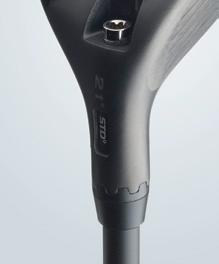
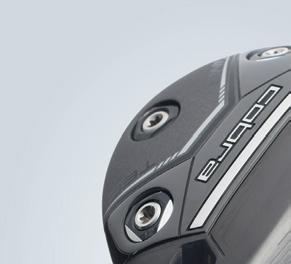
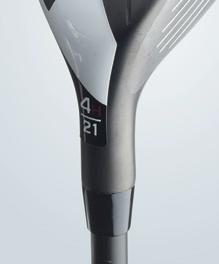
WHAT IT DOES: This beefy-looking, better-player hybrid is full of so much brute force technology that it seems to have originated not from a golf company but from Lockheed Martin. The distance technology is weaponised with a thin, multithickness, high-strength steel face that wraps around the sole. This face also has been engineered through artificial intelligence to have 15 zones of flexibility. A carboncomposite crown reduces weight on top to lower the centre of gravity to better line up with the most flexible part of the face. That means more energy at impact with less spin for a longer, higher ball flight. WHY WE LIKE IT: Designing adjustability in a hybrid can be challenging. In most cases, the small clubhead restricts free space that could be devoted to adjustable hosels and movable weights, and without much free mass, effectiveness is limited. The hosel in the King Tec allows plus/minus 1.5 degrees of loft change, and the sole weights include three ports and a couple of 12-gram screws that can help redirect ball flight or boost forgiveness. This provides driverlike adjustability, which seems appropriate because this feels like a hybrid that wants to be a driver.

PLAYER COMMENT
PLAYER COMMENT
WHAT IT DOES: Rather than designing a hybrid to be just a little bit better than the iron it’s replacing, Ping’s philosophy is refreshingly practical. Hybrids by their nature should be full of all the help they can possibly provide because the player who really needs a hybrid isn’t looking for subtlety. Hence, Ping brings the house here, wrapping the thin steel face around the crown, toe and sole for better overall flexing. Then, for the first time, it adds a carbon-composite crown that wraps around the edges of the perimeter to save mass. The saved weight is redistributed low and to the perimeter for better launch and more stability on mis-hits. Finally, again, because hybrids can really help challenged golfers, Ping extends the range deep into the iron set, even providing a replacement for your 7-iron.
WHY WE LIKE IT: Another reason Ping gets what hybrids should really be: The way these faces curve from crown to sole improves how shots hit low on the face perform. With less loft on the lower part of the face, thin shots will launch with less spin for better velocity and more distance. In other words, they perform better on our worst shots, which is why we have hybrids in the first place.
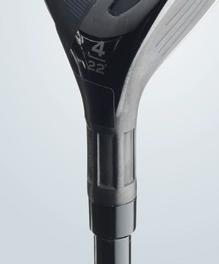
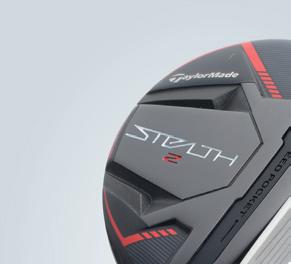
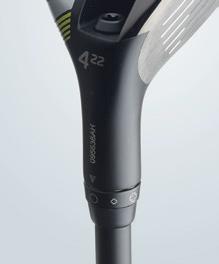
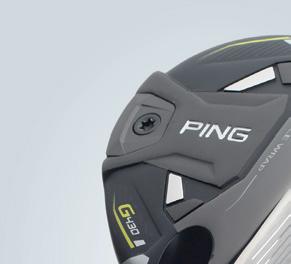
WHAT IT DOES: TaylorMade’s large carbon crown spills over the edges of the perimeter to yield as much as a 78 per cent weight savings compared to the steel it replaces. This results in additional stability (especially on the Stealth 2 HD) and lowers the centre of gravity (more so on the Stealth 2 Plus). The three models use the saved weight of a carbon-composite crown differently to optimise performance for specific player types. The Stealth 2 Plus offers subtle game enhancement for elite players. The Stealth 2 pumps up the distance and launch angle for average players. The new Stealth 2 HD is the company’s first extreme game-improvement hybrid.
WHY WE LIKE IT: TaylorMade’s engineers long have been pushing the boundaries of flexible faces and the complex use of carbon composites. But what also makes these hybrids special is their simple solutions. Take their size, for example. These heads might get progressively larger in the three models, but the faces stay shallow to keep the CGs low. A flatter sole (lower to the ground at the heel and toe) further drops the CG to improve launch in the iron-like Stealth 2 Plus as much as it does for the all-purpose Stealth 2.
TITLEIST
TSR1/TSR2/TSR3
RRP AED 1,525
WHAT IT DOES: There isn’t one way to swing a hybrid. You can sweep it like a fairway wood or hit down on it like an iron. Titleist uses three hybrid models to cover those needs. The TSR2 is more for sweepers and uses a deep but low centre of gravity to provide forgiveness and a higher launch than an iron as well as more control than a fairway wood. The compact TSR3 is better for iron swings because of its forward CG. Finally, the ultralight TSR1 might be the only ‘fairway wood’ a moderate swing-speed player should ever use (even though it’s still only a hybrid). Each of these new models is jacked up with more aggressively tailored face designs to enhance forgiveness (TSR1, TSR2) or centre-hit strikes (TSR3).

WHY WE LIKE IT: The 16-way adjustable hosel might feel like overkill, but because hybrids should be an extension of your iron set, getting the lie angle right is crucial, especially given how much these are hit off the ground. These hosels easily facilitate finding the right lie angle for your swing, and that leads to more consistent contact and perfect loft-gapping. Also, the TSR3’s almost invisible adjustable weight track is only slightly less ingenious than it is effective.
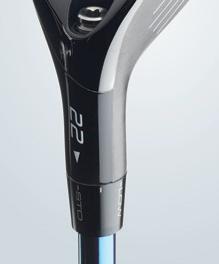
MIZUNO ST-Z 230
WHAT IT DOES: It’s not as if a slot in the front part of a sole on a hybrid is some new frontier to help the face flex for more distance, but Mizuno is trying to get the slot on these new hybrids to perform an additional, distance-enhancing purpose. Adding a slug of steel in the polymer filling lowers the centre of gravity and still allows the face to flex better. Additional mass low and forward enables shots to launch higher with less spin for the most possible distance. The forward weight balances with a large central weight pad to create more stability than in either of the past two Mizuno hybrids.

WHY WE LIKE IT: Creating a hybrid that fits the eyes of better players requires a compact shape and a slightly flatter lie angle, two features that aren’t quite ideal for many average golfers. But this hybrid has features that will make it work for all ability levels. These include a super thin high-strength steel face, a variably thin crown to lower the centre of gravity and an adjustable hosel that tweaks lie by as much as 3 degrees (more upright for draw enhancement) and extends loft to as low as 16 degrees and as high as 27. Those are numbers well within the wheelhouse of both ends of the ability spectrum.

WHAT IT DOES: Because of their tendency to launch high and favour a drawing ball flight, hybrids have started to slip out of fashion for some elite players. But Srixon’s hybrids always have favoured the games of better players, and this version stays true to that objective. Srixon got feedback from its tour staff, and what they wanted was a compact shape and the elimination of the step-down-crown design of previous versions. On the sole, subtle cavities in the heel and toe area improve turf interaction, and the heel notch helps the head maintain a square face angle across a variety of lies.
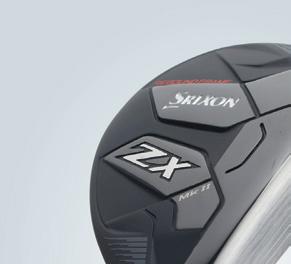
WHY WE LIKE IT: Of course, a tour focus doesn’t mean this hybrid is built with all the face-flexing power of a muscle-back blade. On the contrary, the high-strength steel face is thinner than past Srixon hybrids to provide a little extra ball speed. Perhaps even more impressively, the company incorporates its driver technology in its hybrid faces. That structure has alternating flexible and rigid regions around the face, crown and sole to generate more power and improve energy transfer at impact. Average players will appreciate how its deeper, lower centre of gravity improves control and accuracy.
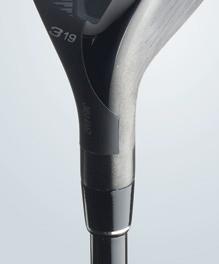
ARCCOS SAYS . . .
Hybrids beat their comparable irons head to head
Are hybrids the smarter choice over the corresponding irons they replace? According to Arccos Golf, the stat-tracking app, the answer is yes for just about all handicaps and for every loft. Golfers from scratch to 25-handicappers who hit a 3-, 4- or 5-hybrid were 87 per cent more likely to hit the green than with the corresponding iron.

For the higher-handicap groups (15 to 20 and 20-plus), a hybrid is always a better choice than a 3-, 4- or 5-iron. Interestingly, the advantage is even greater with the higher- lofted shots (5-hybrids versus 5-irons). For single-digit players, however, the advantages of a hybrid over a long iron aren’t as drastic.
All that said, hitting the green with anything that requires a low-lofted club is always more challenging. The average green in regulation for both 4-hybrid and 4-iron shots for all players was about 1 in 6. In fact, the 0 to 5-handicappers were the only group to hit the green from long range with any club more than 30 per cent of the time — with a 5-hybrid, of course. —MS
Demo this club and get a custom fit at eGolf Megastore
THE SECOND-SCREENER
You have your trigger finger on the minimise button. You’re climbing the corporate ladder while they climb the leaderboard.

THE GRAZER
You’re here for your annual golf snack. You know Tiger wears red and the jacket is green. You spell “Jon Rahm” with two Hs.













